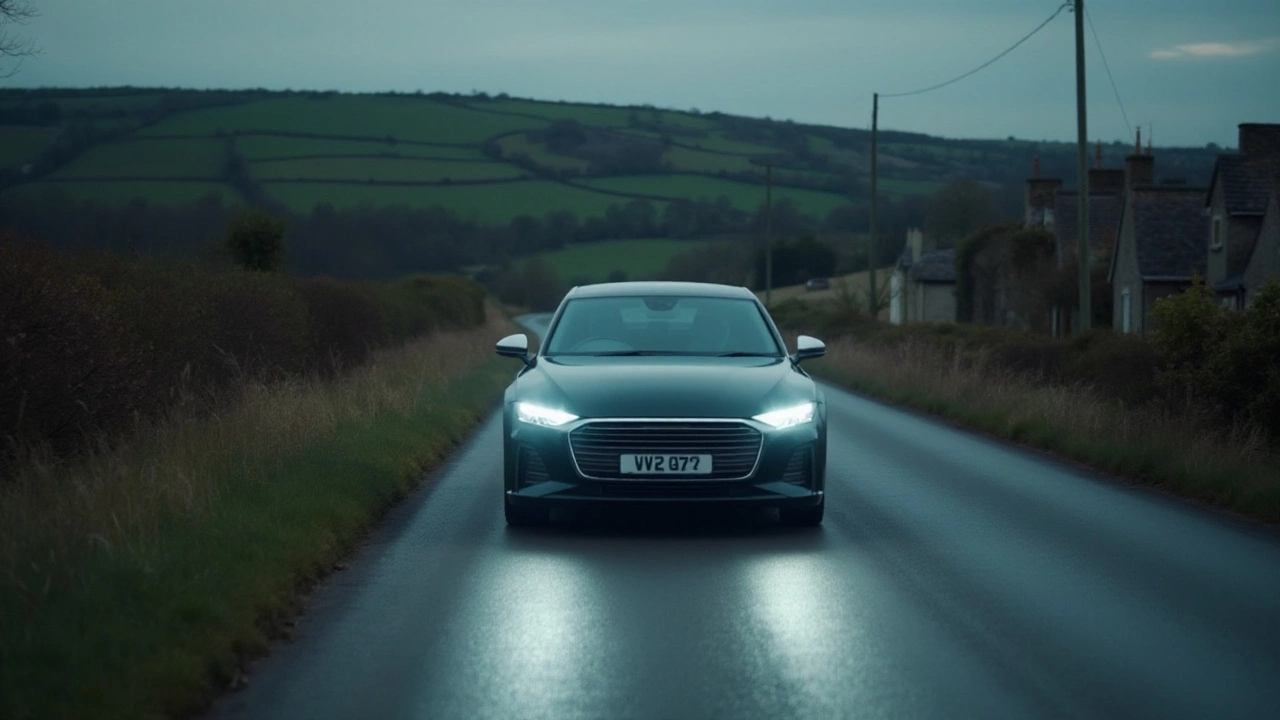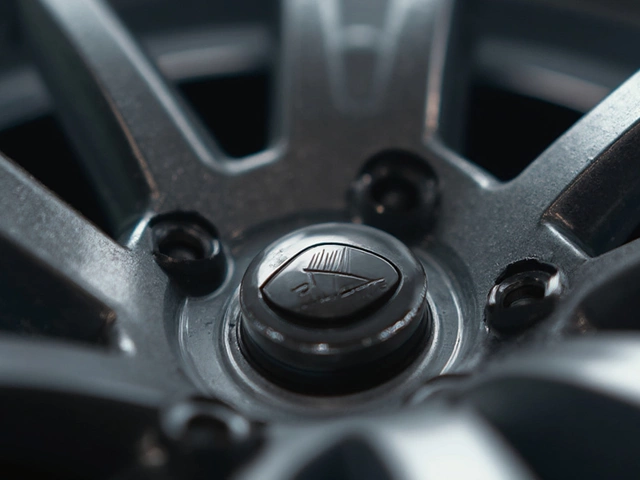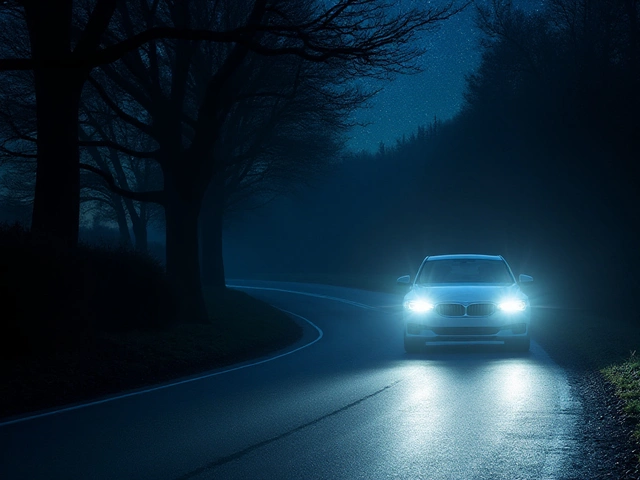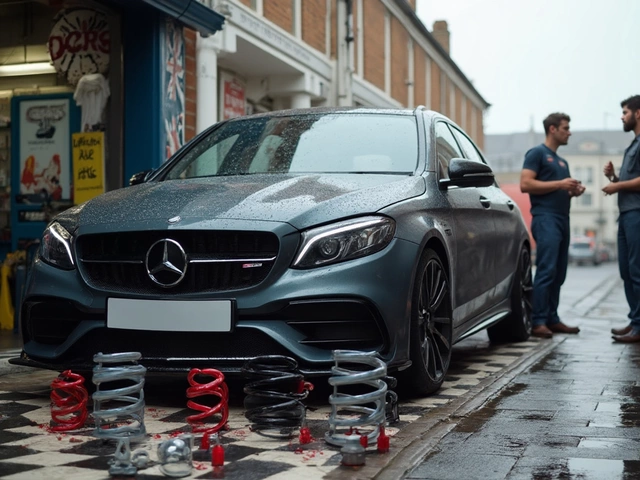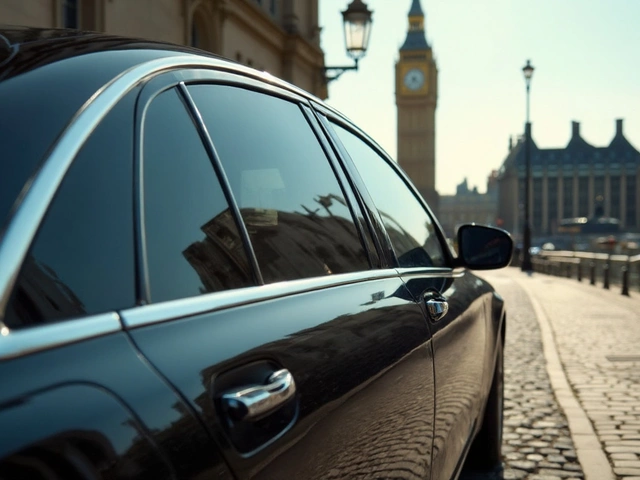In the world of car accessories, few things are as vital as a reliable set of headlights. With technological advancements, LED headlights have quickly risen in popularity, thanks to their remarkable brightness and energy efficiency. But in your quest to upgrade, it’s crucial to ensure you're choosing options that not only illuminate the night but also comply with legal standards.
This article explores the labyrinth of LED headlights, guiding you towards the brightest models approved for use across the US. Whether you're aiming to improve your visibility on rural roads or need a sturdy option for urban drives, understanding the nuances of headlights can help light your way home safely.
- Understanding LED Headlights
- Legal Regulations for Brightness
- Top Picks for Brightest Legal LED Headlights
- Advantages of Using High-Performance LED Headlights
- Tips for Choosing and Installing LED Headlights
Understanding LED Headlights
The evolution of automotive lighting technologies has been nothing short of revolutionary, shifting away from traditional halogen bulbs to advanced LED headlights. Light Emitting Diodes, or LEDs, have transformed the way we look at vehicle illumination, combining impressive brightness with energy efficiency. Unlike their halogen predecessors that emit light via heated filaments, LED headlights generate illumination through the movement of electrons in a semiconductor material. This process results in a much more efficient and long-lasting light source, ideal for today’s environmentally conscious drivers. LED headlights can last up to 25,000 hours, outliving typical halogen bulbs by several fold, offering not only enhanced visibility but also longer maintenance intervals.
What truly sets LED headlights apart is their ability to produce a whiter, crisper beam pattern that more closely resembles natural daylight. This feature is particularly beneficial during nighttime driving, where perception is crucial. The powerful illumination does more than improve the driver's view; it also makes the vehicle more visible to others on the road, enhancing overall safety. According to the Insurance Institute for Highway Safety, headlights that provide adequate lighting during nighttime are essential, as they can help prevent collisions in the absence of daylight.
"Lighting matters in the fall and winter months as drivers need to see the road clearly," says Dr. Russ Rader of the IIHS. "LEDs provide that clarity."With the rise of adaptive LED technologies, newer models even adjust their brightness based on road conditions and surroundings, ensuring optimal performance without dazzling oncoming traffic.
The significance of these brightest headlights lies in their versatility and ability to adapt. Many current LED systems incorporate a cooling mechanism, often using an internal fan or heat sink, to dissipate heat efficiently—an innovation necessary to maintain peak operational conditions. The compact design allows LED headlights to be configured in various shapes and sizes, which enables manufacturers to design sleek headlight assemblies that complement the modern aesthetics of vehicles.
Types of LED Headlights
Typically, you'll find reflector-style LEDs and projector-style LEDs. Reflectors scatter LED light across a more extensive area, perfect for city driving where a broader light spread mitigates blind spots. Conversely, projector-style LEDs focus the light into a single, concentrated beam, which is advantageous for highway travel, ensuring the light shines farther down the roadway.As data continues to affirm, the adoption of LED technology in automotive lighting is set on an upward trajectory. A study from the U.S. Environmental Protection Agency notes that LEDs reduce energy consumption by up to 80% compared to traditional halogen bulbs, a statistic that not only appeals to the eco-minded but also translates to fuel savings over time. For drivers and car enthusiasts considering an upgrade to legal headlights in the US, understanding these features and benefits can make a discerning difference in the choice of headlights, translating to a safer, more cost-effective driving experience.
Legal Regulations for Brightness
When it comes to upgrading your vehicle’s headlights, understanding the legal landscape is as essential as the lumens they produce. The US Department of Transportation (DOT) regulates vehicle headlights, ensuring they are safe and effective for both the vehicle operator and oncoming traffic. These regulations help prevent blinding glare and ensure that the headlights are mounted correctly and at a proper angle. It's vital to be aware that the race to brighter headlights does not translate to ignoring these essential guidelines.
The brightness of LED headlights is generally measured in lumens, and there isn’t an explicit cap set by DOT; however, there are rigorous standards regarding how light is distributed on the road and the potential for glare. These standards might differ for low and high beam functionalities, taking into consideration the angle of tilt and coverage area. Typically, this means that headlights must undergo extensive testing to earn DOT approval, proving they can illuminate the road ahead without posing risks to incoming cars. Understanding this aspect helps ensure you stay compliant while upgrading to the brightest options available.
Many states within the US may impose additional restrictions, adding complexity to headlight regulation. Keeping track of both federal and state guidelines ensures your upgrade to LED headlights won’t inadvertently lead you astray from compliance. As one expert in automotive safety quoted,
"Brightness without boundaries can turn the road into a challenge, so navigating legal responsibility keeps us safe."This vividly illustrates that while brightness is crucial, control, and focus of the beam are equally significant, shaping visibility that isn't just about power, but precision too.
Moreover, technology plays a role in meeting these compliance needs, as innovations in adaptive driving beams offer a legal edge over traditional systems. Despite their potential, they remain limited to specific areas due to the patchwork of local regulations. It might be beneficial to consult with professional automotive installers who can guide you through the legalities of LED installation. This not only assures meeting guidelines but also maximizes the efficiency of the installation, keeping your features intact and ensuring that your LED headlights shine bright in the best possible manner.
Understanding legal regulations helps harmonize safety with enhanced lighting technology. Information on DOT-approved models from manufacturers takes center stage here, where an emphasis on legally compliant brightest headlights ensures choices that won't backfire with fines or safety compromises. Equipping yourself with this understanding eases the choice for upgraded lights that not only meet but potentially exceed safety standards provided they conform to legal standards. A proactive approach ensures peace of mind, knowing you’re driving with both clarity and legality on your side.
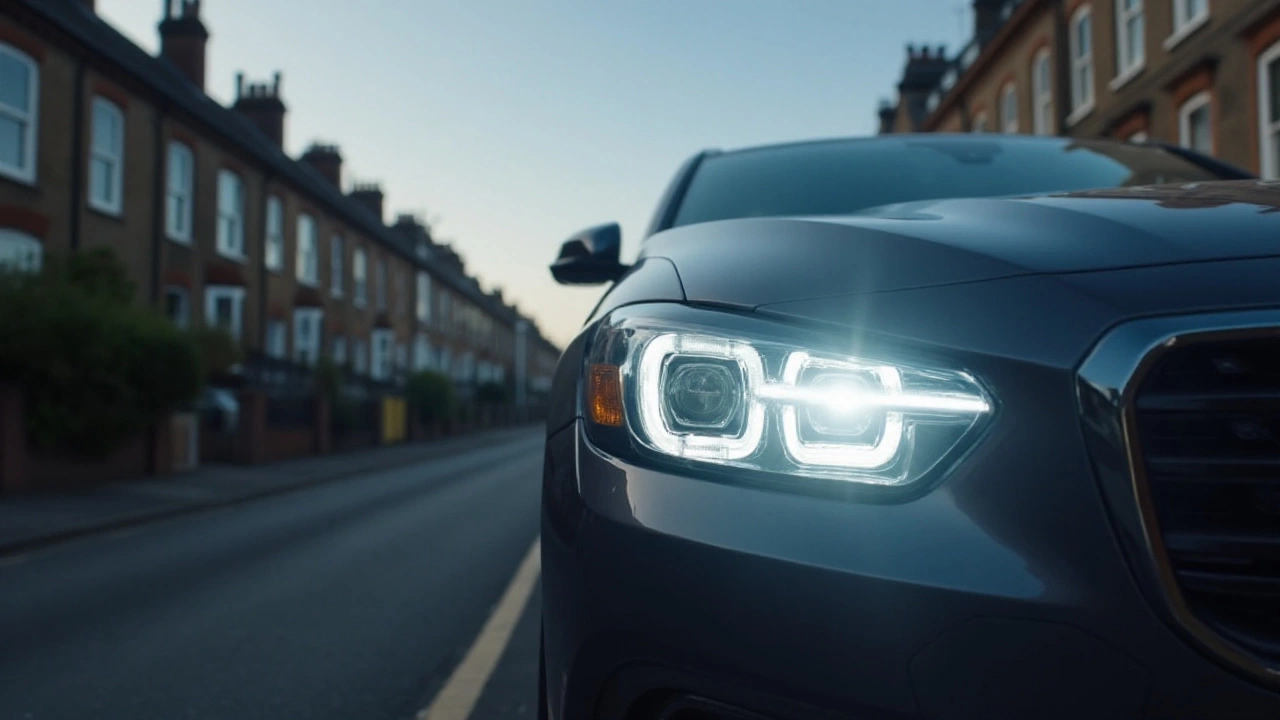
Top Picks for Brightest Legal LED Headlights
When it comes to finding the brightest legal LED headlights on the market, the choices can sometimes feel overwhelming. The diversity in design and functionality is as vast as the varied needs of drivers themselves. However, by narrowing down contenders based on lumens, durability, and compliance with U.S. regulations, we can spotlight some true luminaries in the realm of automotive lighting. Notably, these chosen headlights align with the Federal Motor Vehicle Safety Standards (FMVSS) to ensure that they meet safety requirements and provide clear visibility without blinding oncoming traffic.
Among the top names to consider, the Philips X-tremeUltinon LED Gen2 remains a firm favorite for many motorists. This product exemplifies the balance between intense brightness and precise focus, which is particularly important for avoiding the glare that can be hazardous to other drivers. Its advanced heat management system and easy installation process also make it a popular pick for car enthusiasts. Interestingly, Philips claims that their LEDs are designed to last over 12 years, boasting a robustness that is hard to match in the current market.
Another worthy mention is the Fahren H11/H9/H8 LED Headlight Kit, a package that combines high lumens output with dependable quality. With an impressive 10,000 lumens per pair, these LEDs deliver a substantial improvement over traditional halogens. What sets these apart is their plug-and-play design, making installation a breeze for even the least technically inclined drivers. Also, Fahren incorporates aerospace-grade aluminum housing that ensures a longer lifespan by efficiently dissipating heat.
"Our tests consistently show that top-quality LED headlights can provide up to 200% more brightness than standard halogen lights - a critical factor for road safety," says David Ives, an automotive lighting expert at Car and Driver.
Moreover, Auxbeam F-16 Series LED Headlights deserve a nod for those driven by performance and aesthetics. With a beam that penetrates further than most, thanks to its meticulous design, it offers enhanced visibility during inclement weather conditions like fog and heavy rain. These headlights also feature a customizable beam angle, allowing drivers to adjust the direction according to their individual needs. This practical feature ensures that your headlights remain effective in different driving scenarios, adding an element of adaptability.
When choosing your next set of high-performance, LED headlights, keep these top picks in mind. They all deliver a combination of brightness, longevity, and legal compliance, ensuring you drive with clarity and confidence. Checking their specifications, consider factors such as lumens count and beam type. Stay informed about your state’s regulations on headlight brightness levels before making a purchase to ensure you pick a legal option that enhances—not hinders—your driving experience.
Advantages of Using High-Performance LED Headlights
When it comes to car lighting, choosing high-performance LED headlights offers a range of benefits that go beyond what traditional halogen bulbs can provide. One of the most significant advantages is their exceptional brightness, which ensures that the road ahead is illuminated more clearly and effectively. This not only enhances visibility during night driving but also during inclement weather conditions, which can sometimes obscure vision even in daylight.
A notable benefit of LED technology is its energy efficiency. Unlike halogen bulbs, which convert a lot of energy into heat and therefore waste energy, LED headlights use a minimal amount of electricity to produce light. This quality makes them more environmentally friendly and extends the life of your vehicle's battery, reducing the frequency of battery replacements. A better understanding of energy use helps us appreciate the importance of efficiency in automotive design.
Durability is another key feature. LED headlights tend to have a much longer lifespan than their halogen counterparts. On average, an LED headlight may last up to 25,000 hours, compared to just 1,000 hours for a standard halogen bulb. This means less frequent replacements, saving both time and money for vehicle owners. Furthermore, LED headlights are built to withstand vibrations and impacts, creating a more robust solution for those who regularly tackle rough terrains or long journeys.
Another interesting facet of LED headlights is their quick start-up time. These lights achieve full brightness almost immediately after being turned on. This rapid response time can be crucial in avoiding potential hazards encountered suddenly while driving, such as animals crossing the road or debris blown by the wind. Their instant illumination pairs seamlessly with the advanced technology in modern cars, contributing to safer driving experiences.
"LED technology has revolutionized the automotive world by not only enhancing visibility but also offering sustainable, eco-friendly solutions," says Alex West, an automotive lighting expert.
Beyond the technical specs, there’s a stylistic advantage too. High-performance LED headlights offer a modern and sleek look that many car enthusiasts love. The clean, white light emitted closely resembles daylight, which not only pleases the eyes but also reduces driver fatigue during long trips. Automakers are increasingly embracing these elements, leading to innovations and improvements in aesthetic design.
Finally, when thinking about legal constraints, high-performance LED headlights are generally well-aligned with regulatory standards. These lights are engineered to provide maximum brightness within limits set by authorities to avoid causing glare for other drivers. This compliance is vital because it ensures that drivers can enjoy improved visibility without compromising safety standards. In the world of US headlights, following these regulations is essential for blending performance with legal requirements.
As you consider upgrading your vehicle’s lighting system, weighing these advantages can provide valuable insights. Whether for the environmental benefits or the sheer improvement in visibility, there's little doubt that high-performance LED headlights offer compelling reasons for becoming the standard of the future.
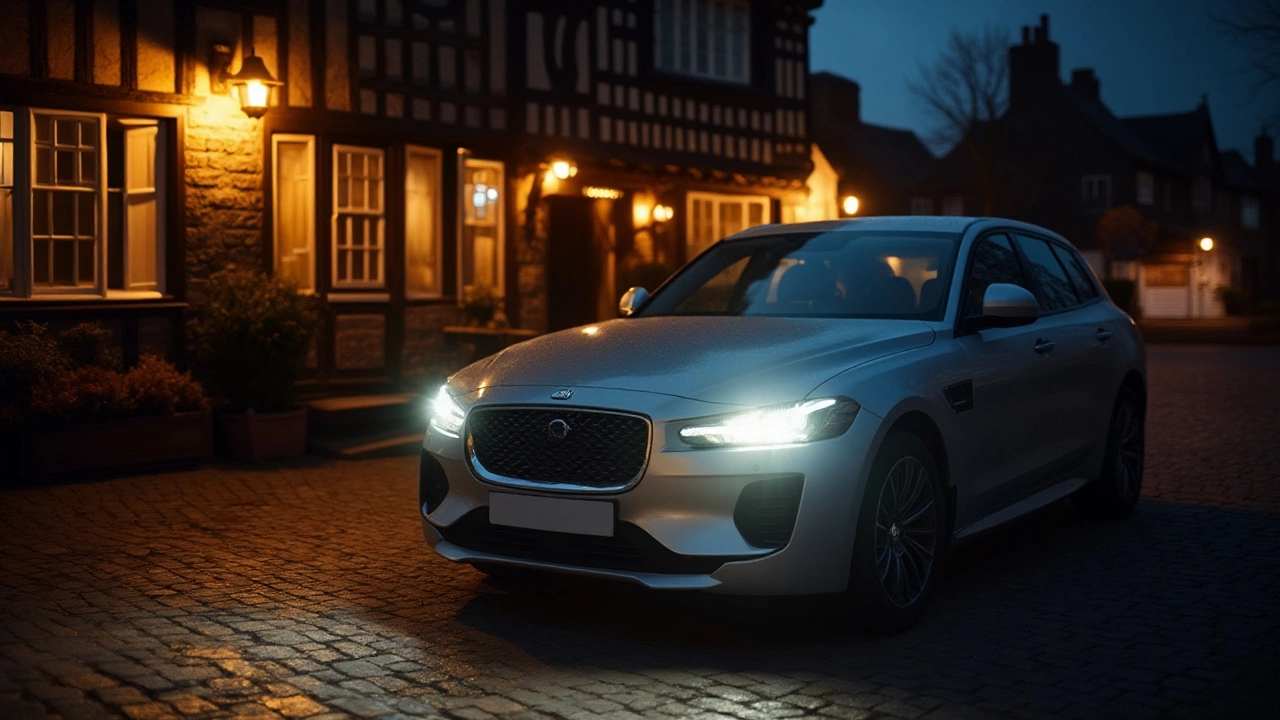
Tips for Choosing and Installing LED Headlights
When venturing into the world of LED headlights, making an informed choice is crucial to not only achieve optimal brightness but also to adhere to legal standards and safety requirements. The modern market is flooded with options, making it challenging for even the most discerning driver to select the right set. One of the first steps is to ensure compatibility with your vehicle model. Different cars have varying headlight housing and wiring, so verifying these aspects before purchasing can save you from unnecessary hassles. Many manufacturers provide detailed guidelines on compatibility; never hesitate to reach out to them for clarity.
Material quality is another critical factor. While many LED headlights boast impressive specifications on paper, not all are built to withstand the rigors of daily driving. Opt for headlights made with durable materials like aluminum for the casings, as they provide excellent heat dissipation, which is crucial for LED performance and longevity. Checking for proper IP ratings is also recommended; an IP67 or higher rating indicates that the headlights are resistant to dust and can withstand water immersion, ensuring durability in diverse weather conditions.
When it comes to installation, some car enthusiasts prefer DIY methods, while others choose professional services. Should you decide to tackle the installation yourself, having a comprehensive understanding of your car's technical manual is imperative. The intricacies of handling and fitting the LED components can vary widely between different models. Tools like screwdrivers, wire strippers, and electric tapes become indispensable allies in such tasks. Additionally, accessing online forums and video tutorials specific to your vehicle model can be beneficial resources. Many seasoned DIYers share invaluable insights that can help you avoid common pitfalls during the process.
A crucial yet often overlooked aspect is adjusting the headlights post-installation. Misaligned headlights can blind oncoming drivers, potentially leading to dangerous situations. Ensure that your LED headlights are correctly aimed, providing a clear vision without dazzling others. According to a research statistic from the Traffic Safety Association in 2023, correct headlight alignment can reduce nighttime accidents by nearly 30%, underscoring the importance of this step. In states where inspections are mandatory, failure to properly align your headlights could lead to fines or the need to redo the alignment.
To enhance your driving safety and headlight efficiency further, consider the color temperature of the bulbs. Cooler temperatures, typically around 6000K, offer a crisp, white light that closely resembles daylight. Such a setting is preferred by many drivers for its superior visibility. However, always check the DOT regulations as they may mandate specific color ranges for legal headlights. It's worth noting that in some states, particular temperature settings are not just suggested; they are required by law to ensure uniformity in vehicle lighting. Always cross-check your state's requirements to stay on the legal side.
Lastly, don't forget the value of a warranty when selecting your LED headlights. Reliable manufacturers stand by their products and offer warranties ranging from a year to a lifetime on their LEDs. This assurance not only reflects the product's quality but also provides peace of mind, knowing that any defects or issues can be resolved without additional out-of-pocket expenses. The presence of a robust customer service team adds another layer of confidence, ensuring that help is just a call away when needed.

